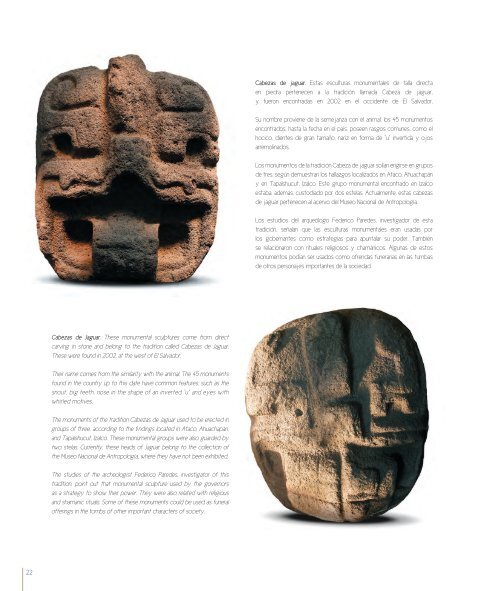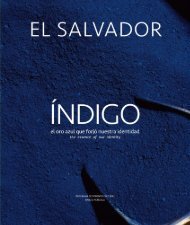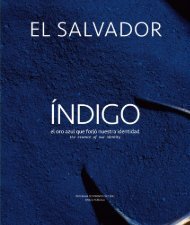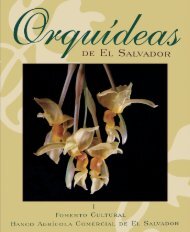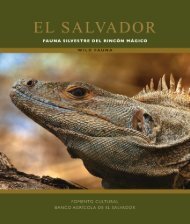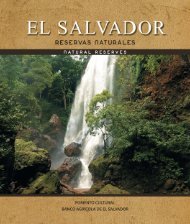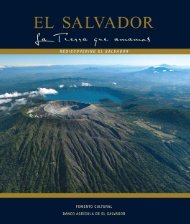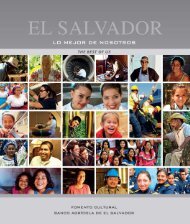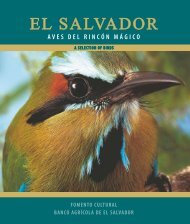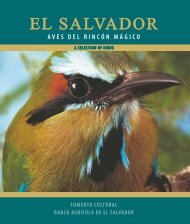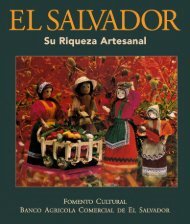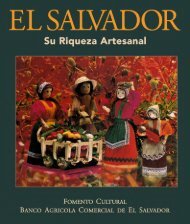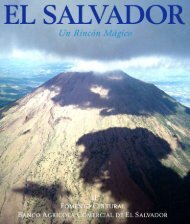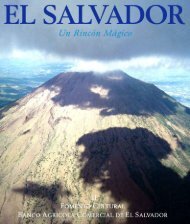Monumentos y Esculturas del Rincón Mágico
You also want an ePaper? Increase the reach of your titles
YUMPU automatically turns print PDFs into web optimized ePapers that Google loves.
Cabezas de jaguar. Estas esculturas monumentales de talla directa<br />
en piedra pertenecen a la tradición llamada Cabeza de jaguar,<br />
y fueron encontradas en 2002 en el occidente de El Salvador.<br />
Su nombre proviene de la semejanza con el animal; los 45 monumentos<br />
encontrados, hasta la fecha en el país, poseen rasgos comunes, como el<br />
hocico, dientes de gran tamaño, nariz en forma de “u” invertida y ojos<br />
arremolinados.<br />
Los monumentos de la tradición Cabeza de jaguar solían erigirse en grupos<br />
de tres, según demuestran los hallazgos localizados en Ataco, Ahuachapán<br />
y en Tapalshucut, Izalco. Este grupo monumental encontrado en Izalco<br />
estaba, además, custodiado por dos estelas. Actualmente, estas cabezas<br />
de jaguar pertenecen al acervo <strong>del</strong> Museo Nacional de Antropología.<br />
Los estudios <strong>del</strong> arqueólogo Federico Paredes, investigador de esta<br />
tradición, señalan que las esculturas monumentales eran usadas por<br />
los gobernantes como estrategias para apuntalar su poder. También<br />
se relacionaron con rituales religiosos y chamánicos. Algunas de estos<br />
monumentos podían ser usados como ofrendas funerarias en las tumbas<br />
de otros personajes importantes de la sociedad.<br />
Cabezas de Jaguar. These monumental sculptures come from direct<br />
carving in stone and belong to the tradition called Cabezas de Jaguar.<br />
These were found in 2002, at the west of El Salvador.<br />
Their name comes from the similarity with the animal. The 45 monuments<br />
found in the country up to this date have common features; such as the<br />
snout, big teeth, nose in the shape of an inverted “u” and eyes with<br />
whirled motives.<br />
The monuments of the tradition Cabezas de Jaguar used to be erected in<br />
groups of three, according to the findings located in Ataco, Ahuachapán,<br />
and Tapalshucut, Izalco. These monumental groups were also guarded by<br />
two stelas. Currently, these heads of Jaguar belong to the collection of<br />
the Museo Nacional de Antropología, where they have not been exhibited.<br />
The studies of the archeologist Federico Paredes, investigator of this<br />
tradition, point out that monumental sculpture used by the governors<br />
as a strategy to show their power. They were also related with religious<br />
and shamanic rituals. Some of these monuments could be used as funeral<br />
offerings in the tombs of other important characters of society.<br />
22


